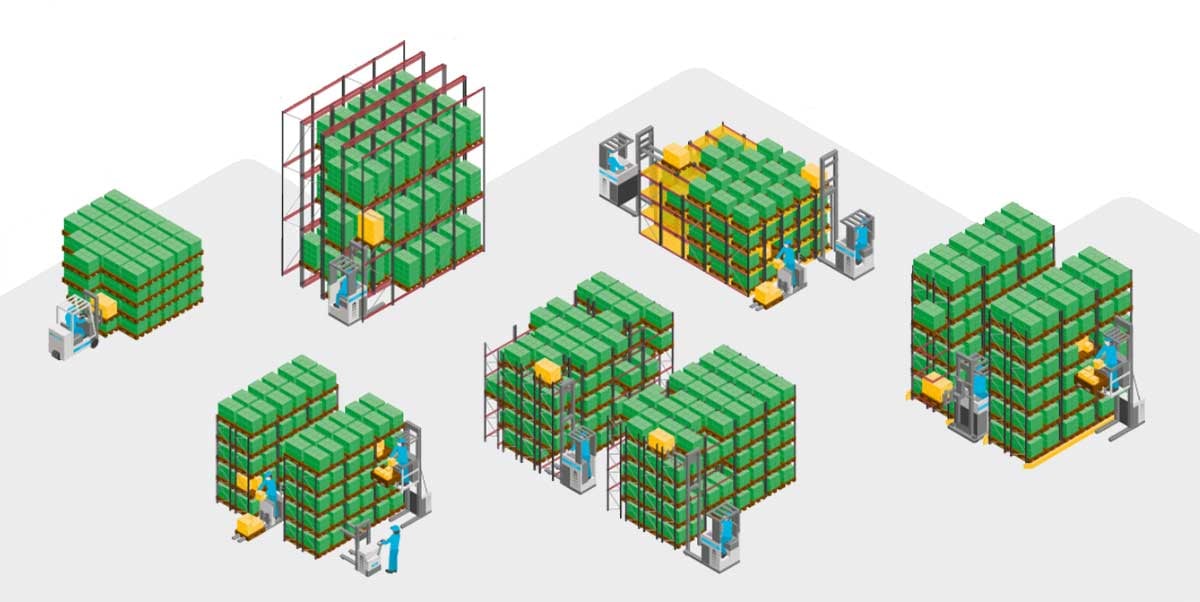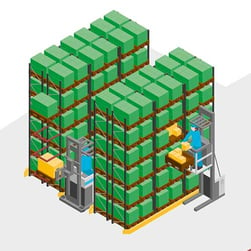
Making the most efficient use of the available floor space in your warehouse is always important. However, when the density of storage increases, placing and removing unit loads when you need to typically takes more time.
There’s a number of storage options available that offer high density, but they vary in how easily the pallets can be accessed - depending on your operation and individual needs, the best option will be different. With the help of the Materials Handling Guide, we can look at a few options.
Double-deep racking
In this system, pallets are stored in racks two-deep, rather than only one deep. This means four pallets can be stored between a pair of aisles, instead of two. This means you use the space you have much more effectively, compared to conventional racking. However, special trucks with telescoping forks capable of reaching the rear pallet must be used, and you should have at least two pallets per SKU - otherwise you face the problem of shuffling goods around when retrieving the rear pallet.
Narrow-aisle storage
With this system, aisle widths are reduced significantly, often to 1.5 - 1.8 metres, so that the available floor space can be used for more racking. Like double-deep, this system also requires special equipment in the form of very narrow aisle (VNA) trucks, like our TERGO URS truck.
Drive-in racking
With this system, the forklifts actually enter the racking to place and receive pallets, rather than simply driving alongside it in an aisle. Drive-in racking offers very high density, but also good selectivity. For this reason, it’s often found in cold stores, where running costs are high and space usage needs to be maximised.
Interested in finding out more about which dense storage system is best for you? Click the button below to get our complete guide to warehouse storage. We’ll show you some more high-density systems, and give a comparison of each solution in terms of intial investment, handling cost, handling capacity and space utilisation.







































Comment